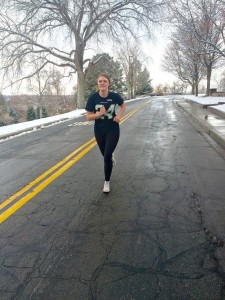
Utah Department of Health officials warn that inversion could lead to long-term health risks for those who run outside.
Vigorous outdoor exercise during times of inversion can lead to reduced lung function, irritation of the respiratory system and inflammation of airway passages, which could lead to damage of these passageways, according to a Utah Department of Health press release.
Salt Lake County Health Department officials explained that inversion occurs when a layer of cool air gets trapped under a layer of warm air, creating a “lid” for air pollutants to get trapped at ground level.
This typically occurs in Utah County after a snowstorm. The pollutants in the air become visible, creating a foggy atmosphere. The longer the inversion is present, the more pollutants build up into a thick fog.
Those pollutants are collectively called particle pollution, or PM 2.5. Their presence is measured by the Air Quality Index. The higher the Air Quality Index rating is, the more harmful the air is, according to Intermountain Health Care.
Normal air quality levels are from one to 50. The real danger is when levels reach 100–300. Provo’s air quality rating for the past week has been between 101 to 111, according to reports from last week. The Utah Department of Health said these levels still affect people even though they are not hazardous.
Robert Paine, chief of pulmonary care at the University of Utah School of Medicine, explained why PM 2.5 is harmful to the body.
“PM 2.5 particles are about two and a half microns in diameter,” Paine said. “Which is about half the diameter of human hair. It’s the perfect size to get breathed into the lungs. As you breathe, the particles can pass easily in the lungs and they go throughout the body through the blood, causing a variety of health problems.”
These health problems are pretty severe. Exposure to ozone and PM 2.5 particles causes coughing, congestion, tightness in chest when breathing, shortness of breath and difficulty breathing, according to the Utah Department of Health website. And these effects are more likely to affect runners outside.
BYU student Aaron Forrest said he noticed a difference running on streets farther away from the busy Provo streets.
“I feel it is a little bit easier to breathe on my training runs on the trails up the canyon,” Forrest said. “When I ran my marathon in Vegas, breathing was so much easier.”
Intermountain Healthcare suggested runners who are serious about bettering their performance should avoid times of high traffic to run. Runners should also shorten the duration of their runs and avoid places of heavy traffic. Officials also suggest lower impact exercises like walking rather than running.




